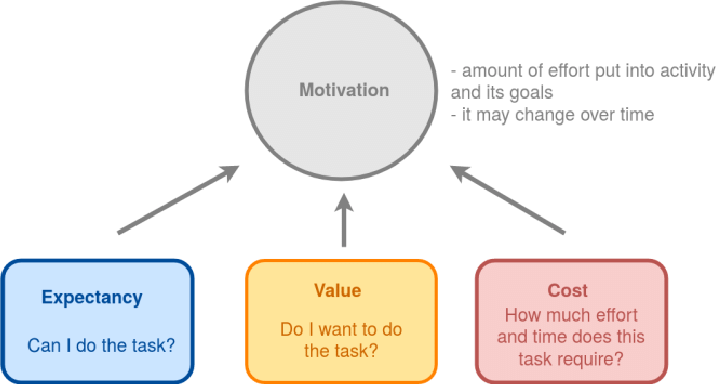Expectancy, Value, and Cost Theory puts forth the argument that achievement related choices are motivated by a combination of three factors, expectancy, value, and cost. Expectancy refers to whether or not people feel they will be successful at completing a task. Value refers to how much a person values the task. Obviously, the motivation to complete a task is high when a correlation between expectancy and value are high. In other words, motivation is high when learners are confident they can complete the task successfully, and the completion of the task is worth their while. The barriers that exist to the attainment of the goal is referred to as costs.

Expectancy

Expectancy is the belief learners have that they can do something. Expectancy can be improved by teaching students strategies and when to employ them. It is also improved with timely and specific feedback students are allowed to respond to in an effort to make improvements. Next, expectancy is improved with the implementation of regular formative assessments and a climate of making errors. Finally, using scaffolded supports to gradually release responsibility to the student increases expectancy, or the belief that a student can successfully accomplish something.
Value

Value is the belief that a task is worth doing. Providing students with purpose and relevance for completing a task is vital. In order to increase value, a teacher can provide students with a constrained range of choices for demonstrating what they know. Third, cultivating an environment with positive emotions increases value. Using novelty, humor, and expressing empathy can result in a positive environment.
Cost

Costs consist of the barriers that may hinder the successful completion of a task. Poor instructions, work environment, technology, executive functioning, cognitive load, poor feedback, unrelated homework, and very little formative assessment prior to a summative assessment can hinder expectancy and value and decrease a learner’s motivation to complete a task.

